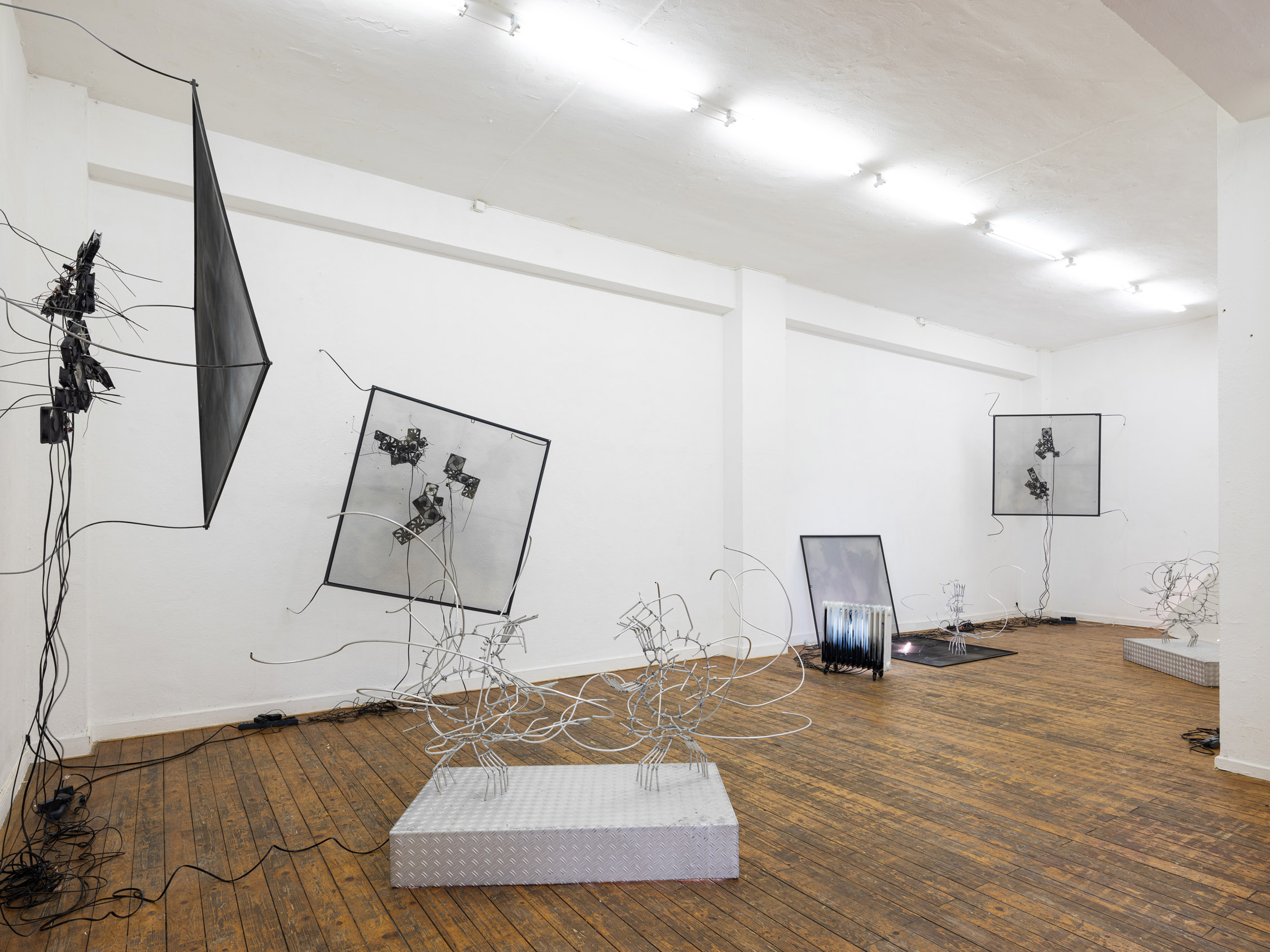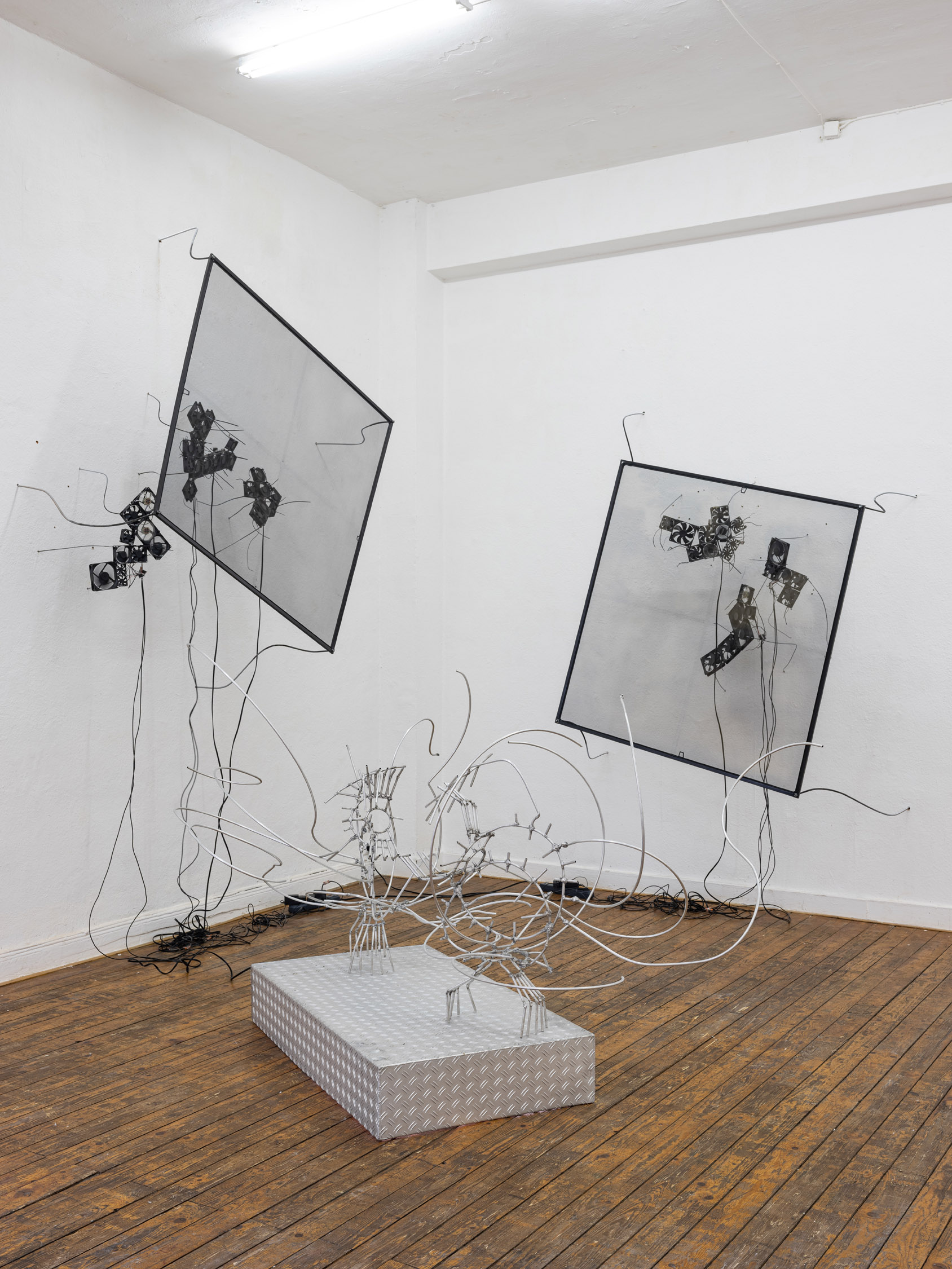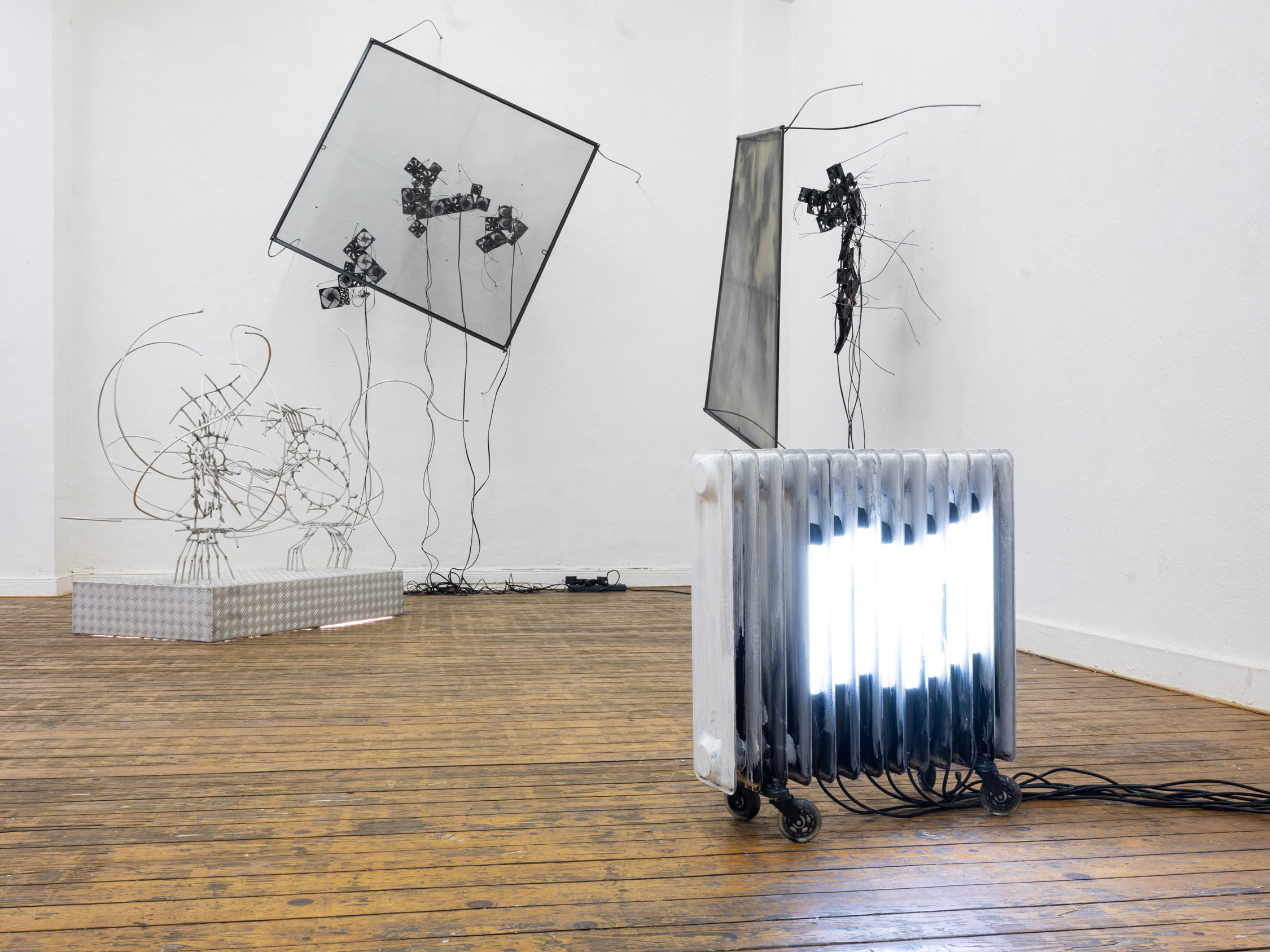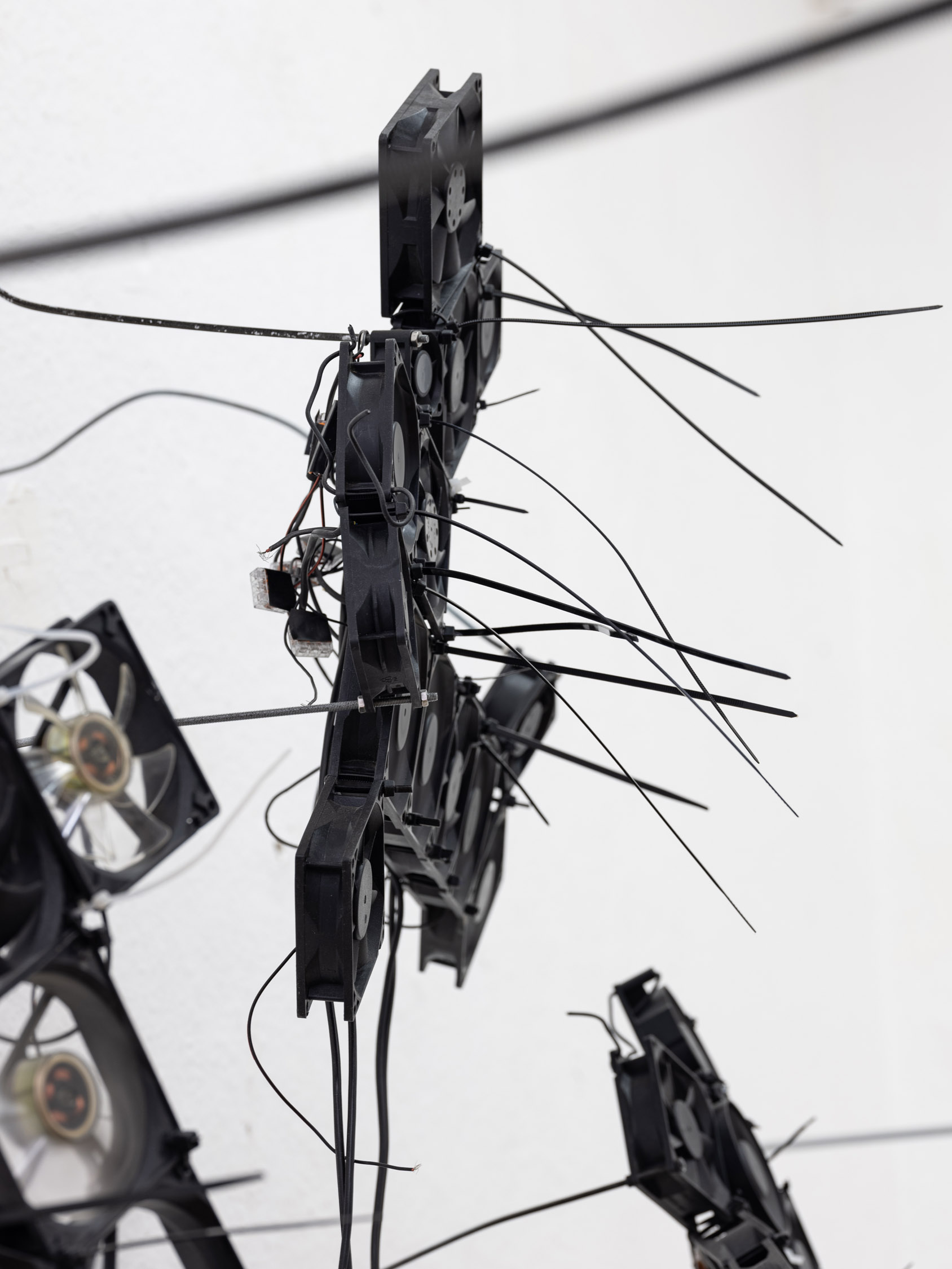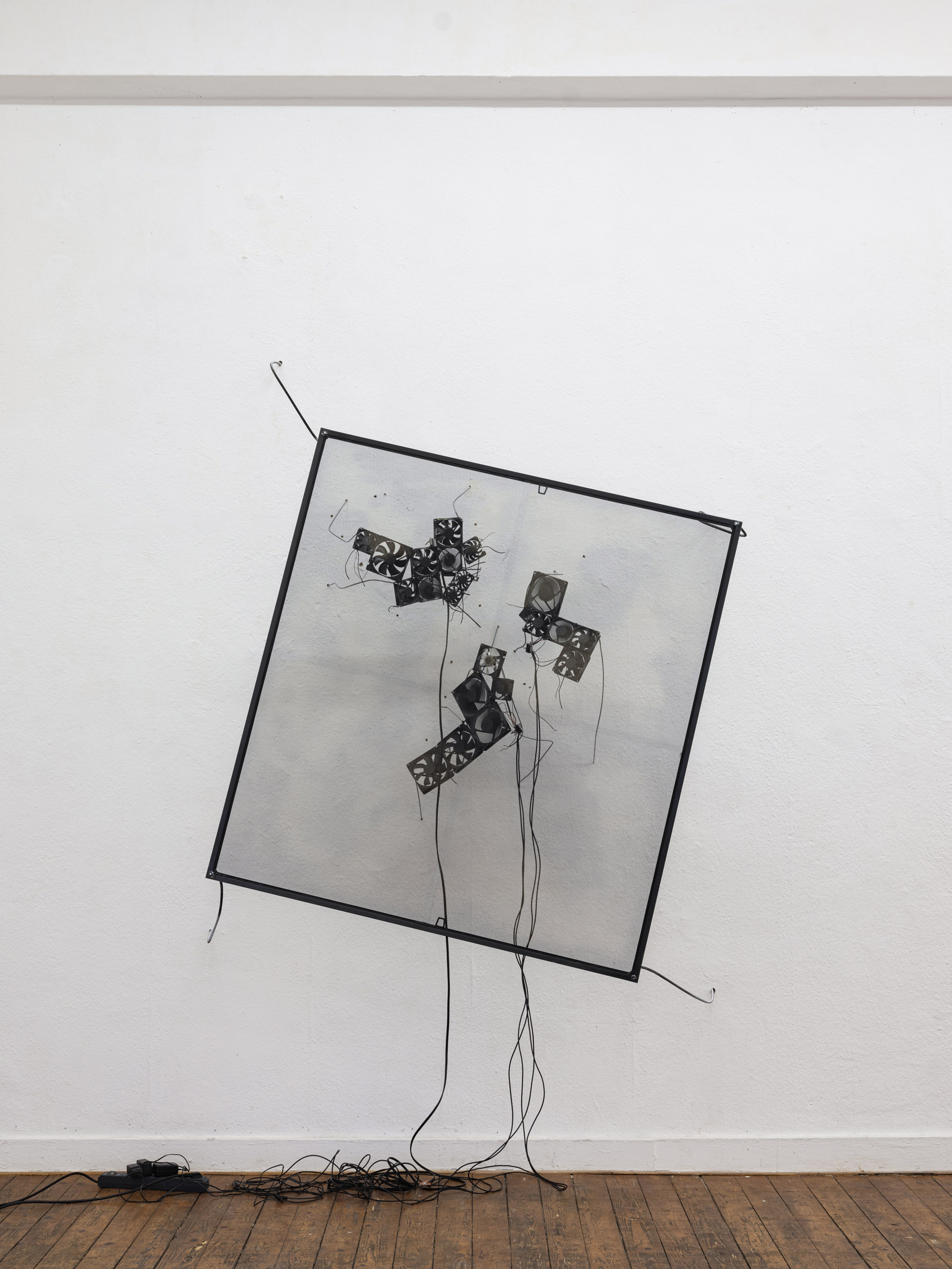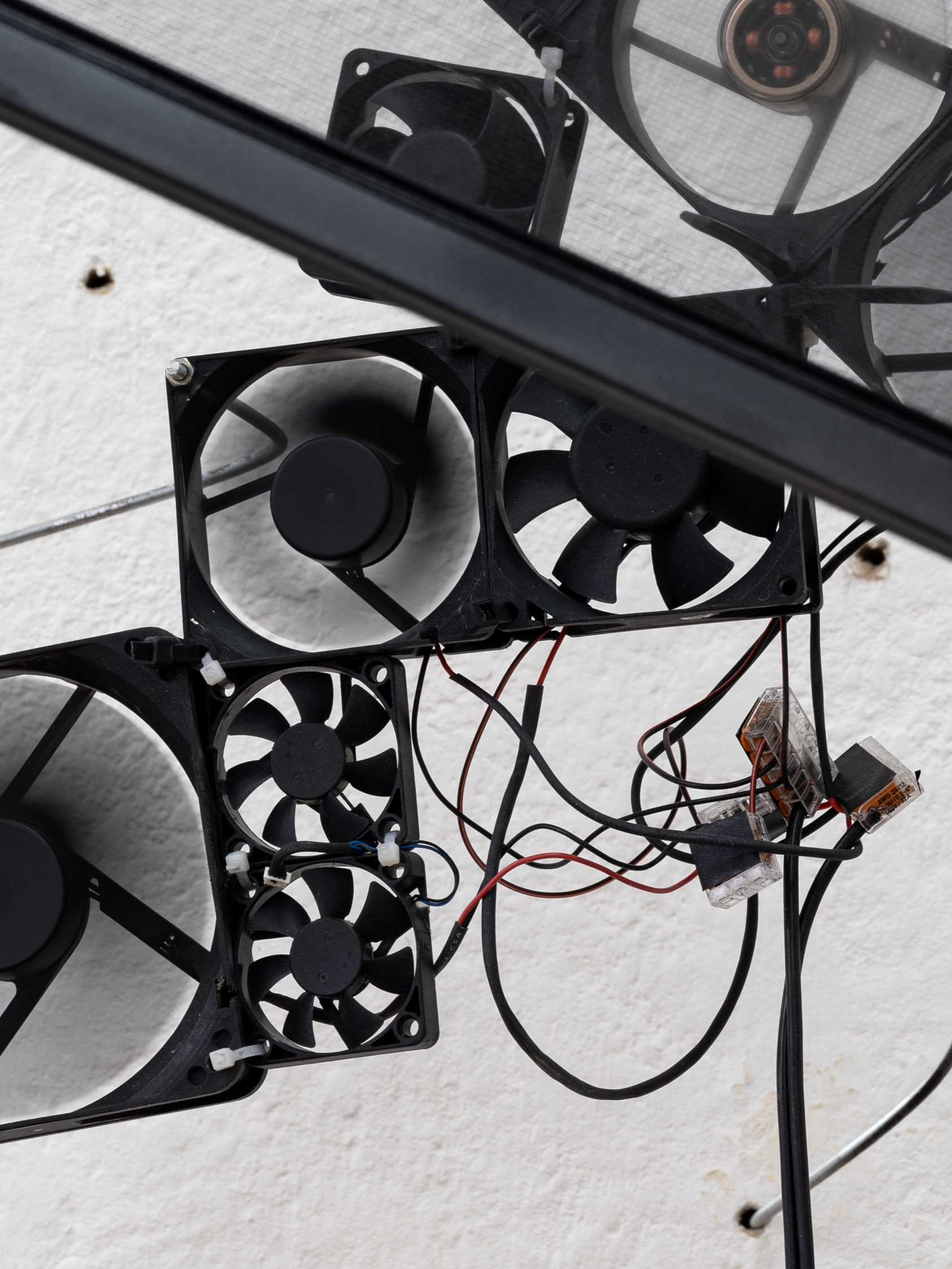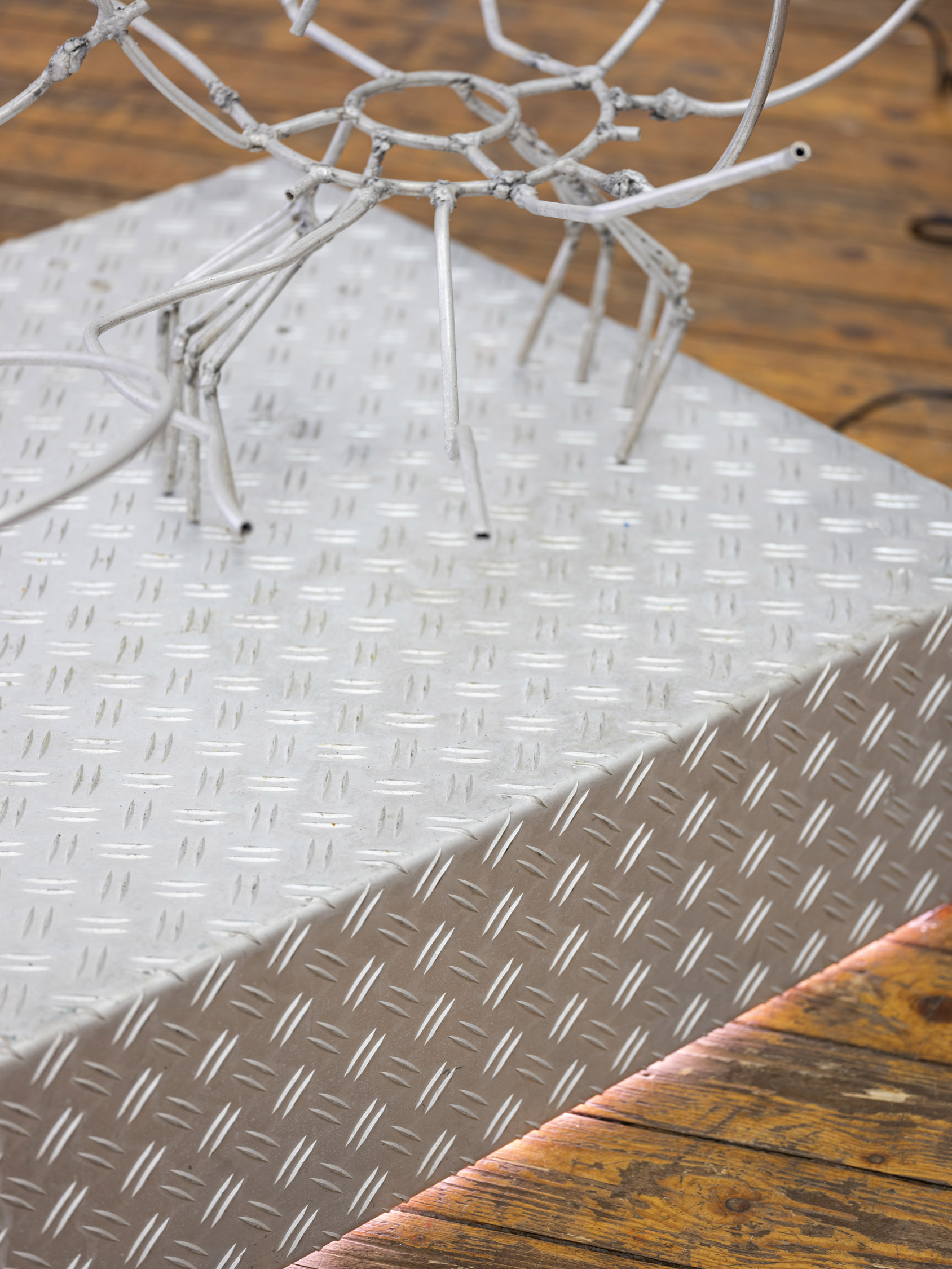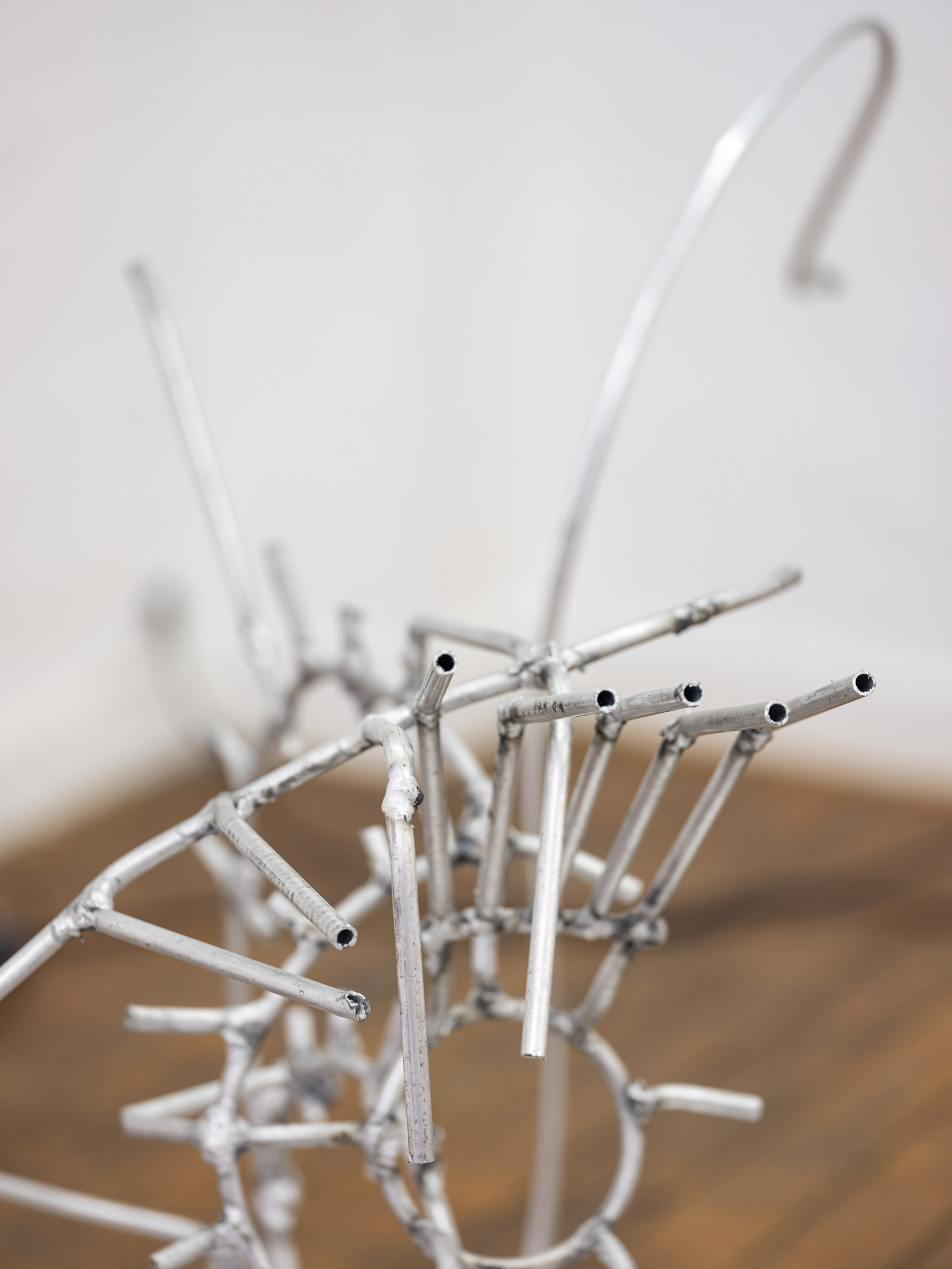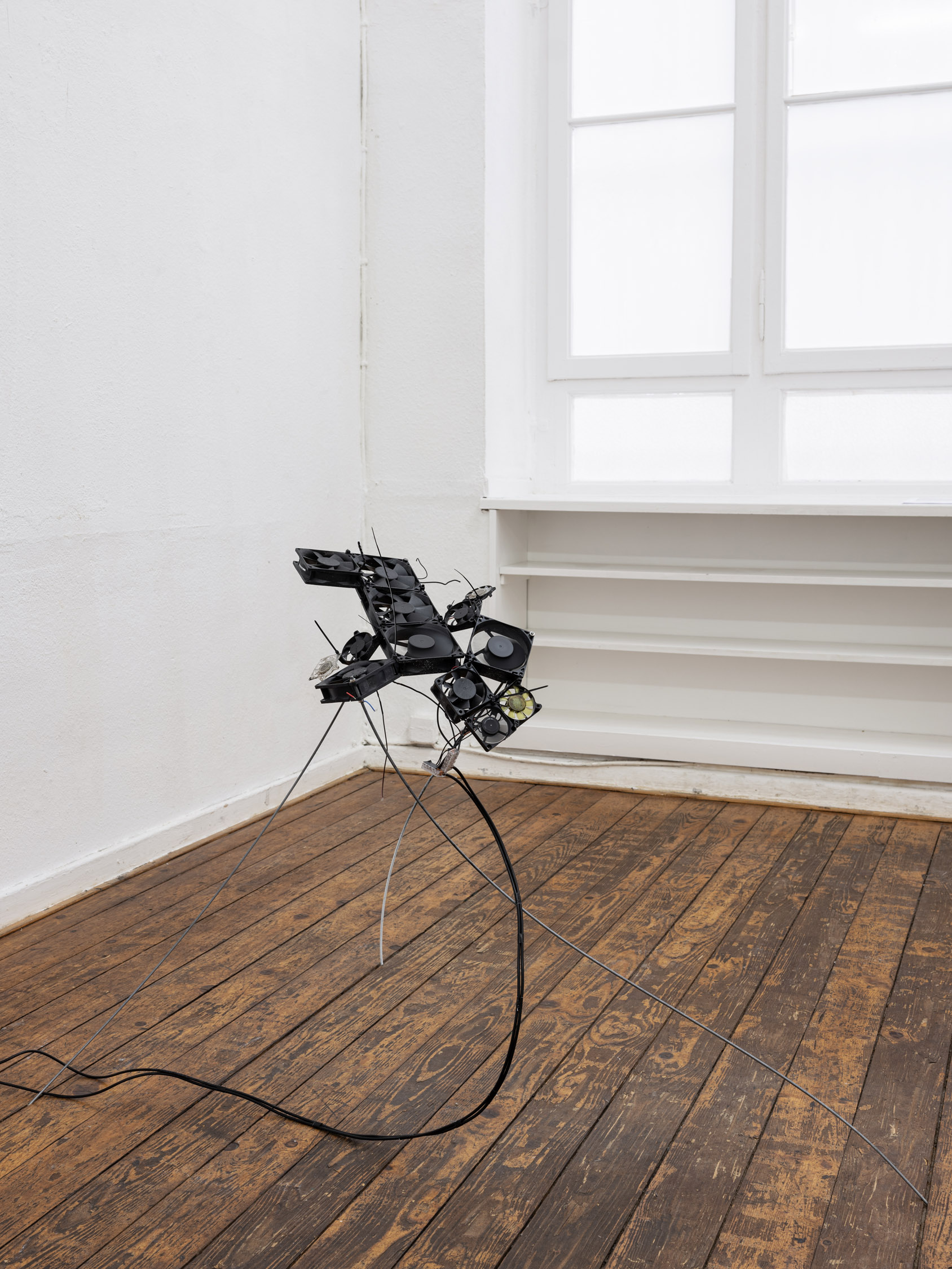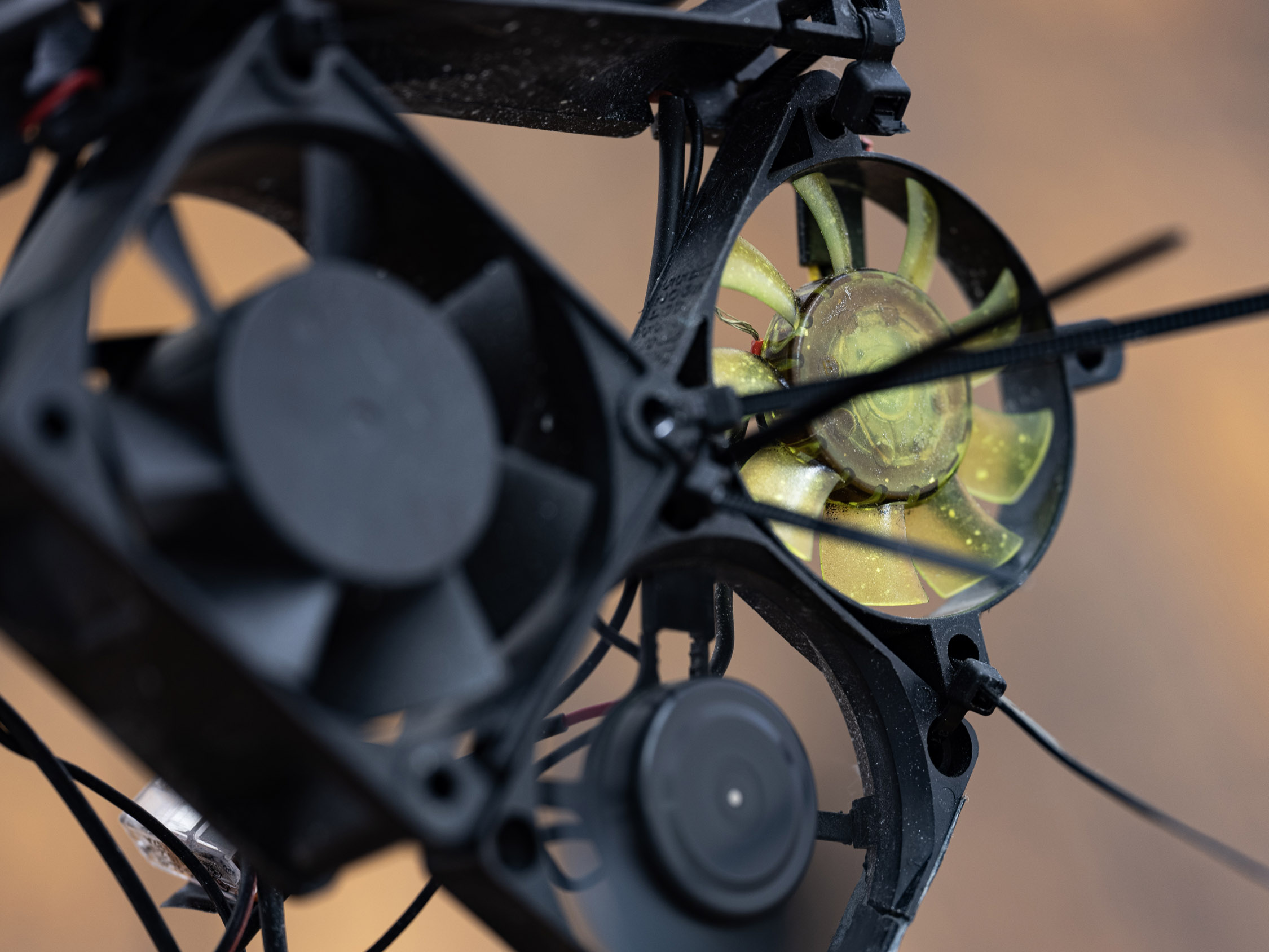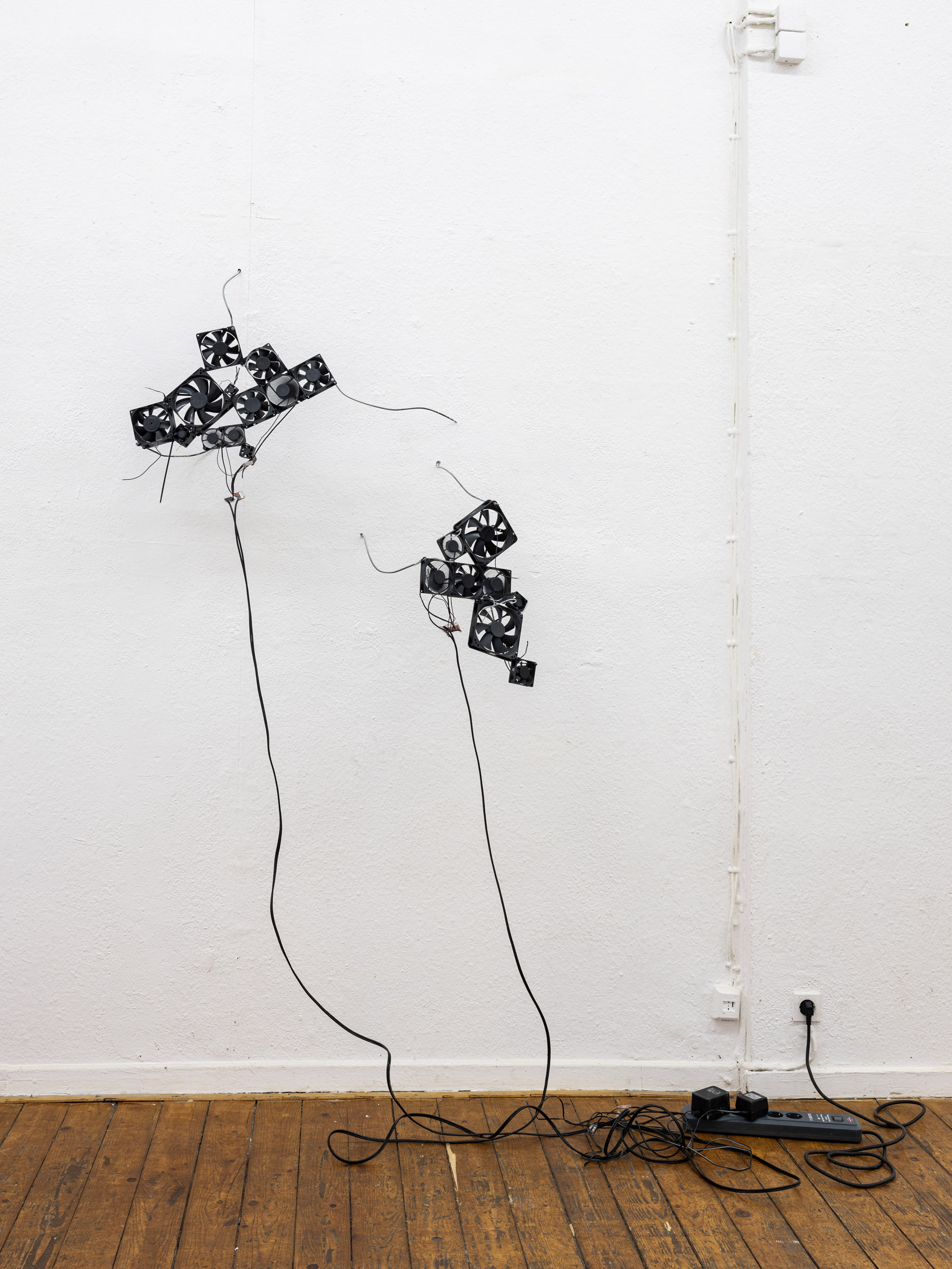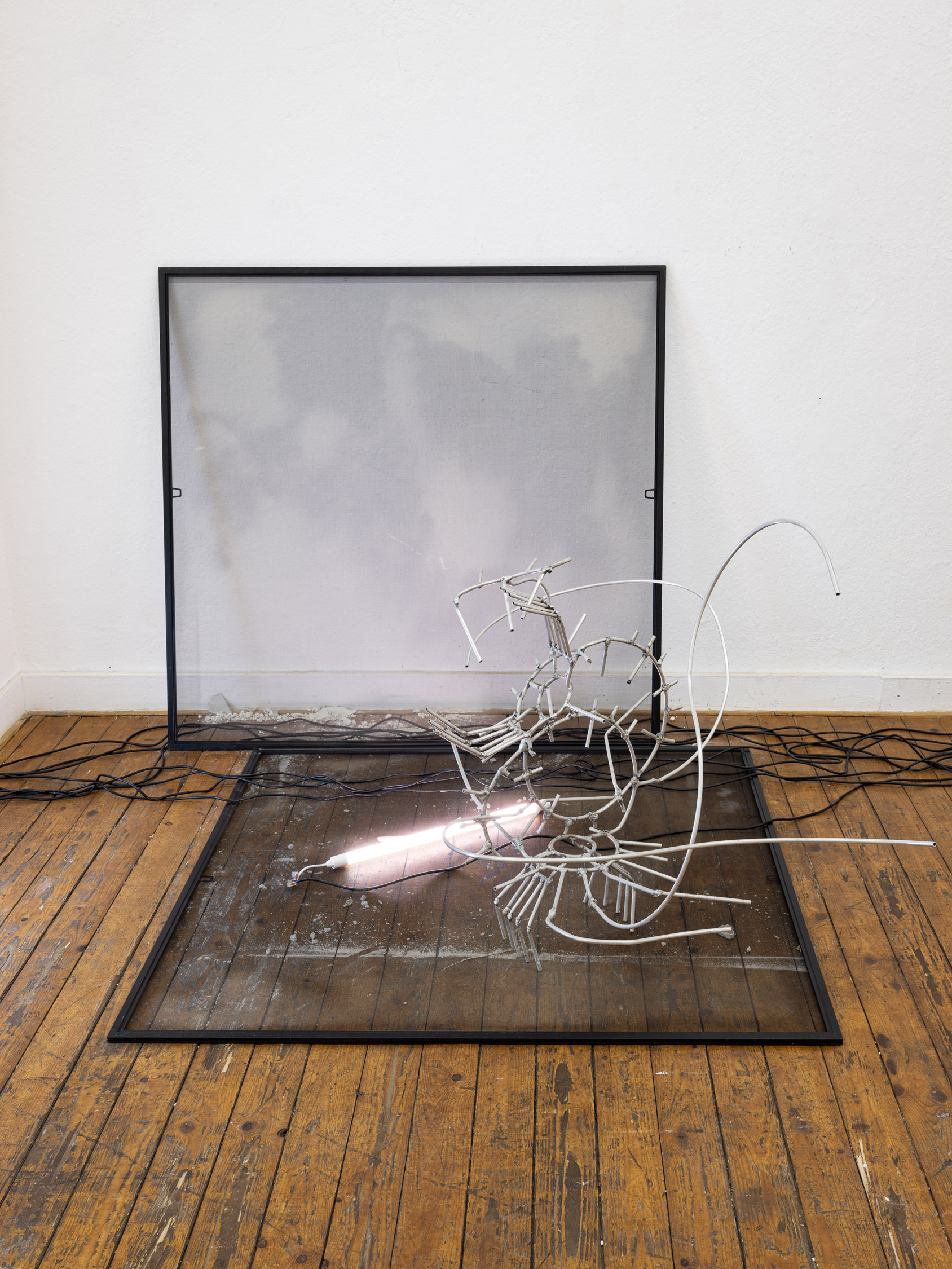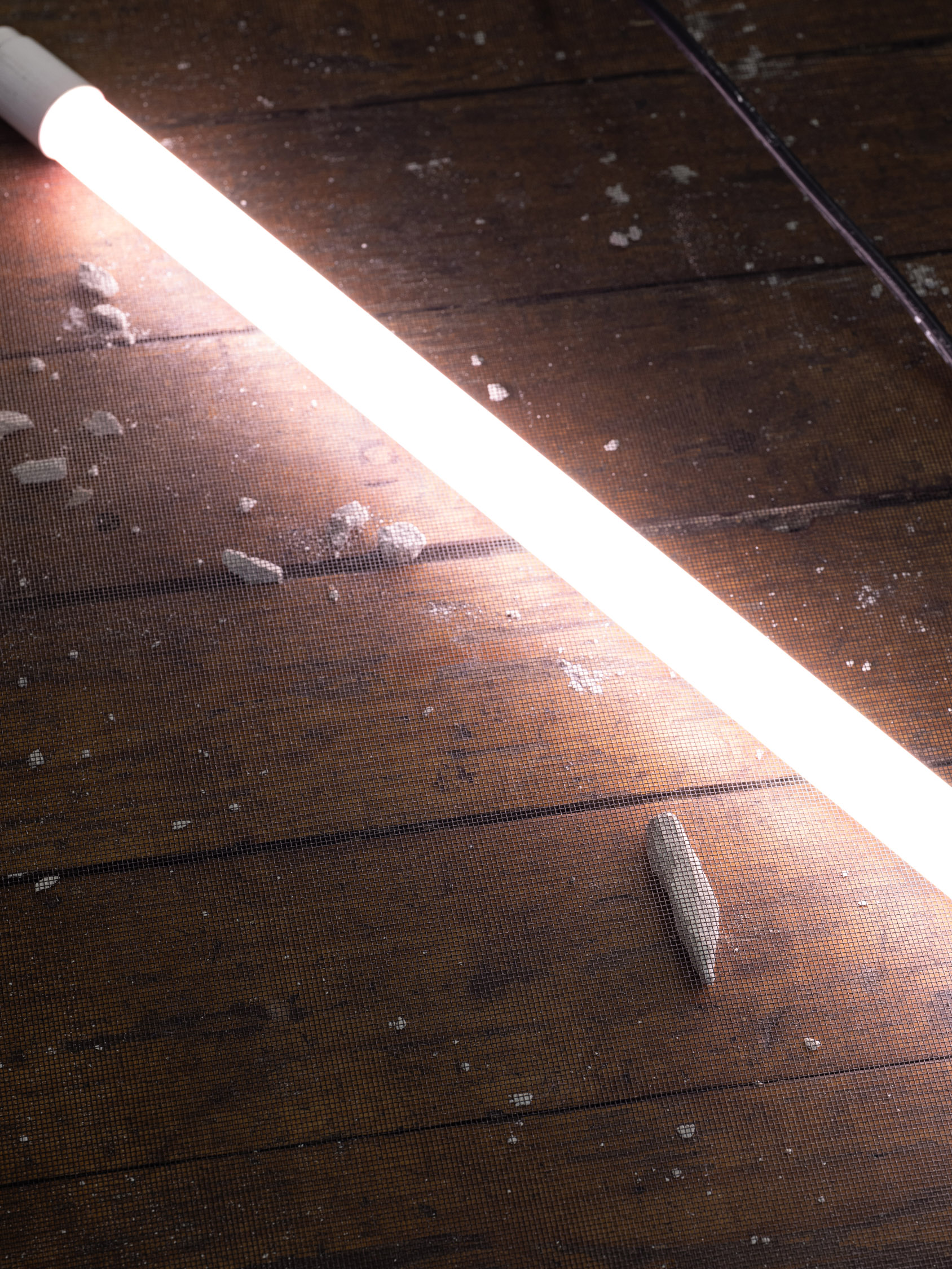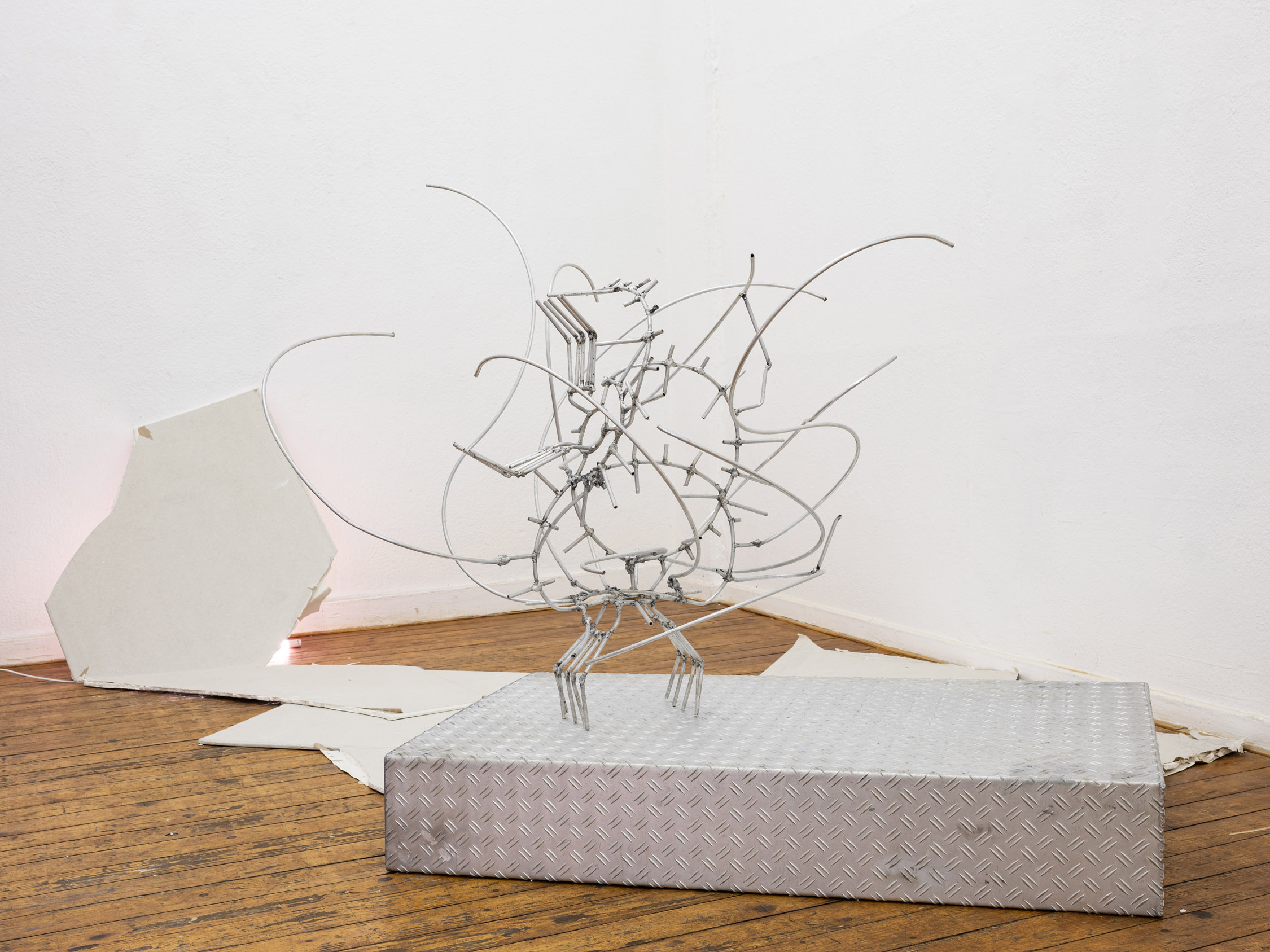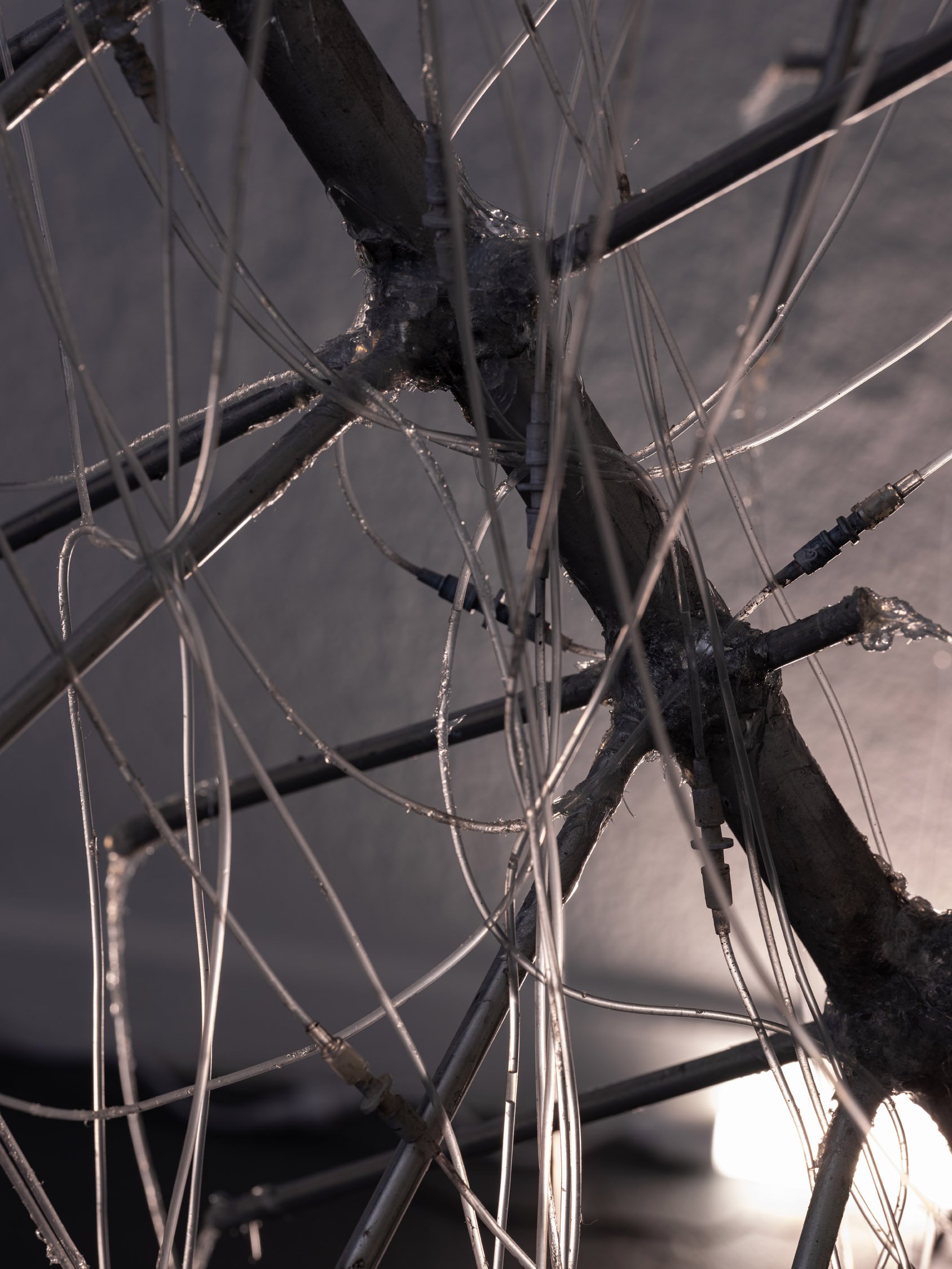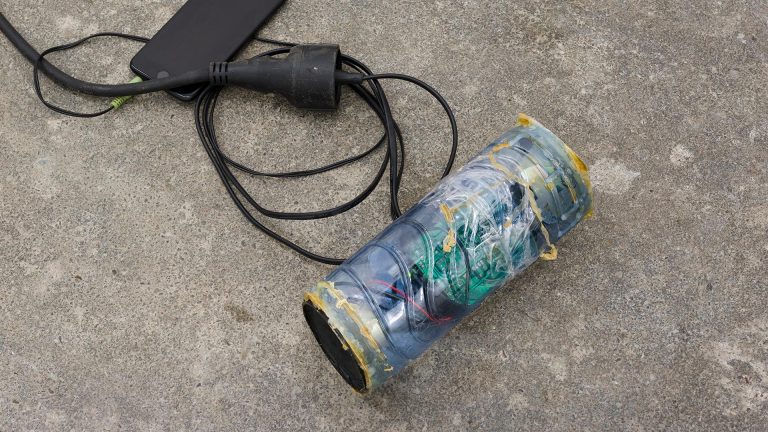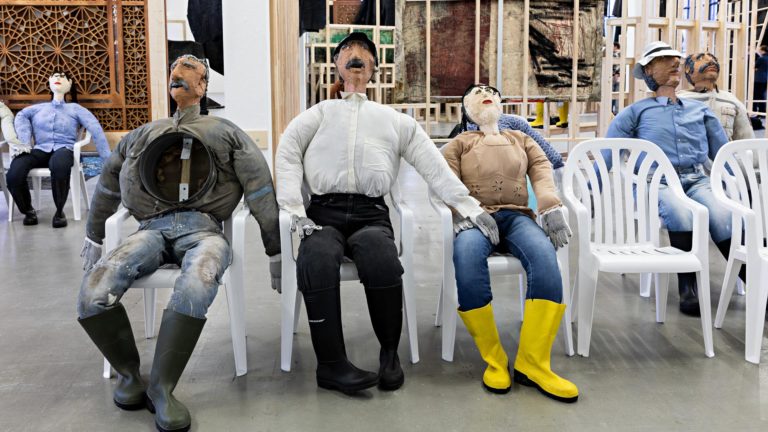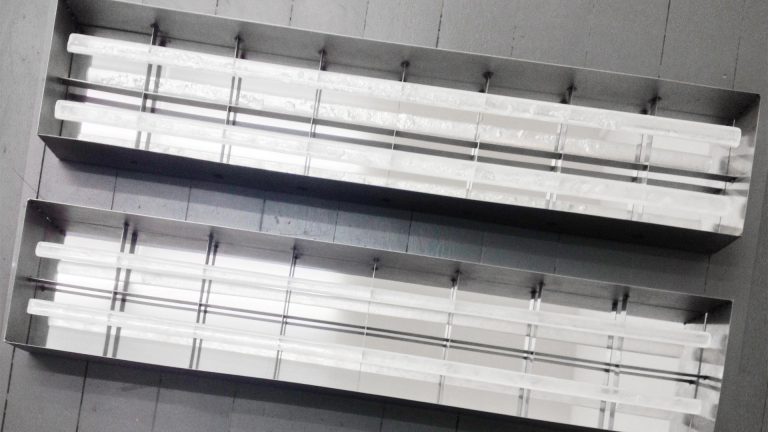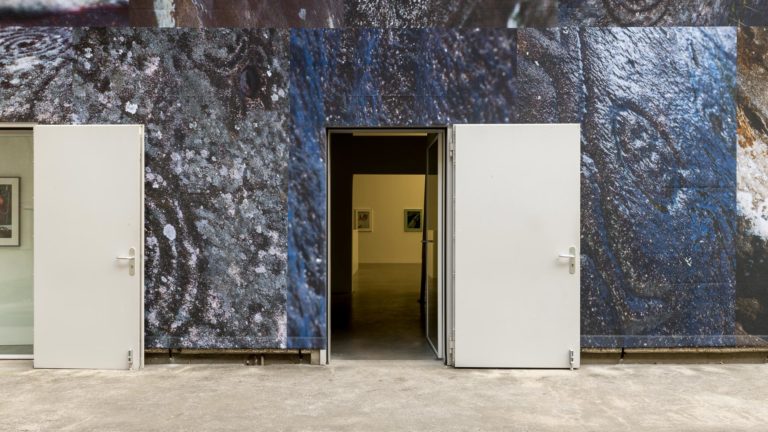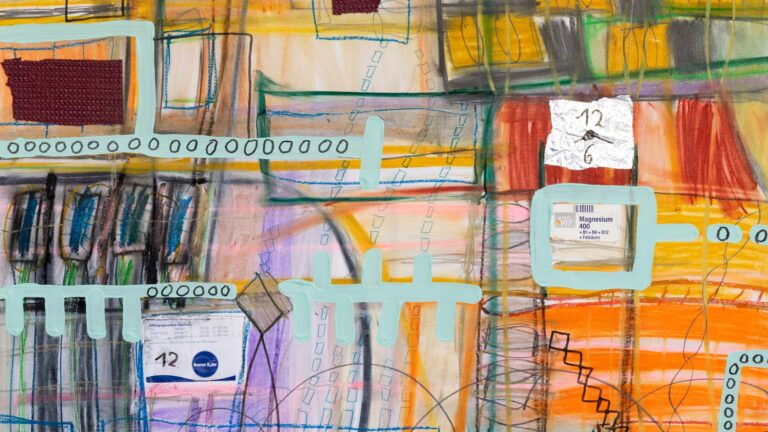Artist: Karoline Schultz
Exhibition title: The Collapsible House
Venue: Moltkerei Werkstatt, Cologne, Germany
Date: February 18 – March 23, 2024
Photography: all images copyright and courtesy of the artist and Moltkerei Werkstatt
The Collapsible House is the title of the solo exhibition by Karoline Schultz. This foldable or portable house is a retreat, for example, found in nature among snail-like creatures. However, in the world of the exhibition, beings of a dystopian age of technology after technology are forming. Black grid frames with steel legs have nestled themselves on the walls of the room. They protect fungus-like growths of PC vents, which propel the room into a constant hum and buzz. The floor is populated by confidently standing beings – with limbs reminiscent of crustaceans. In sweeping gestures, they seem to struggle for power in this world. Overtaken by hoses, cables, sharp spirals are evident in the adjacent room, which are part of this ecosystem. Everything is in motion, breathing, and in constant communication. Hoses, cables, and aluminum rods are intertwined, appearing sober and angular – fragile between the organic, fragile nature and the artificial, technological world. These beings are autonomous creatures that have emerged from the Anthropocene and have become adaptable – through the evolution of artificial organisms into an alien-like parallel world.
Karoline Schultz uses machines that operate on established principles and materials that give her artworks a techno-organic flair. The advancing computer technology is perceived as cool and impersonal, as it is fast and powerful. It leads to the diminishing importance of human roles. In her exhibition, Schultz connects human intervention in the natural world with the influence of technology. The artist approaches questions about relationships in and with space and explores, on the one hand, digital network structures in the interweavings of expansive cables and hoses, and on the other hand, they carry a warning element within them. Human bodies are not present. The metallic crab creatures and the rhizome fans seem to have survived human presence. These objects create a apocalyptic mood while also pointing to our digital progress, where the absence of humans becomes even more apparent, and functionality is therefore perceived as even more brutal and hostile.
